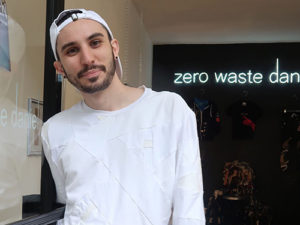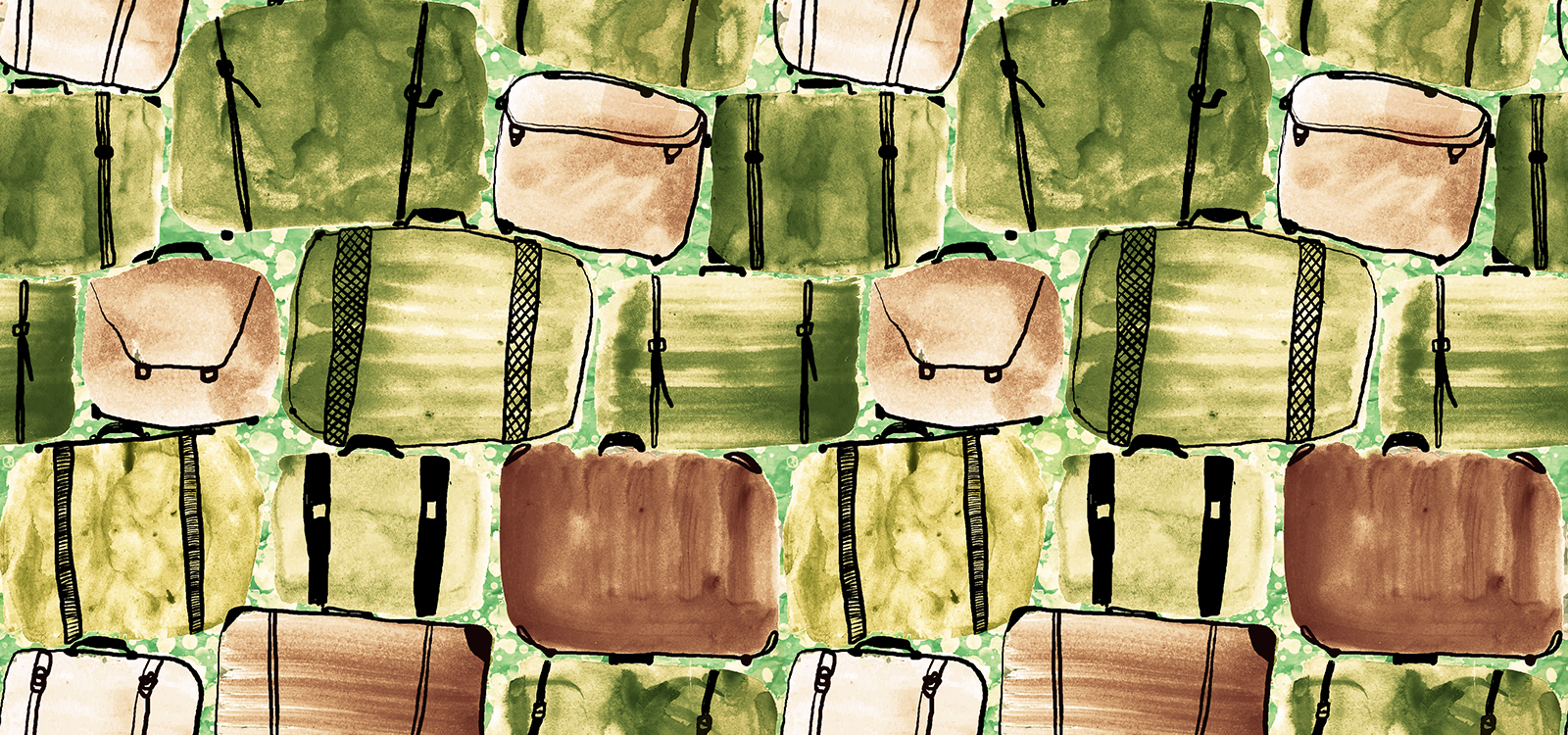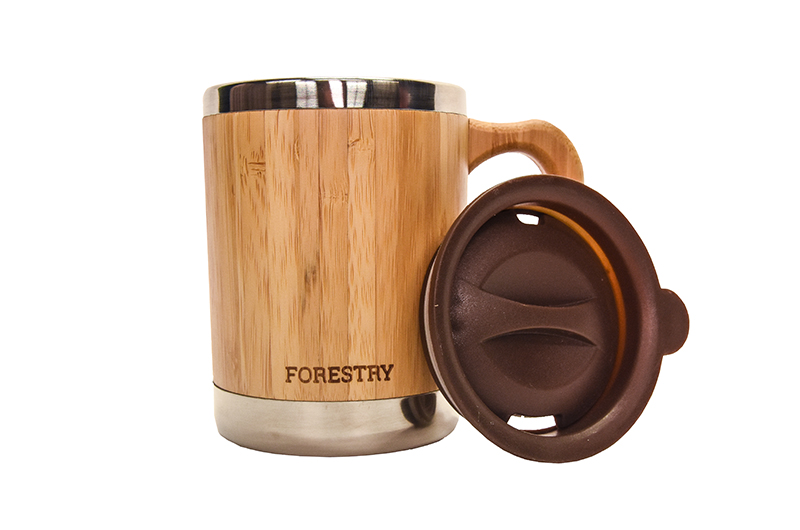13 Easy Ideas to Make Your Travels Less Wasteful

“I felt like a hypocrite to say that these people were wasteful when I was just as wasteful. My trash was in a trash can but ultimately it all ends up in the same place,” Megean Weldon, the Zero Waste Nerd, says about her decision to go zero waste. Photo courtesy of Megean Weldon.
Megean Weldon of Kansas City, Missouri, has lived zero-waste for more than three years. She documents her lifestyle and offers suggestions through Zero Waste Nerd and is active on Instagram with more than 45,000 followers. When taking a vacation with her husband and 2-year-old son to Colorado’s Estes Park, Weldon found her family reverting to plan B when they were in need of food. She said the grocery store near their hotel wasn’t what they were banking on and offered few produce options, leaving her family adjusting their daily goal to not create waste. Accepting that they didn’t come prepared with enough of their own food or materials, Weldon and her husband decided to purchase items only packaged in metal, glass, or paper. While their food wasn’t package-free, it came in compostable or reusable materials.
Weldon isn’t the only one who struggles to commit to being green while traveling. The curveballs of travel often leave us scrambling and forced to take whatever is available. Often those options involve plastic, which may explain the more than 30 million tons of plastic discarded by Americans each year. In fact, the World Economic Forum predicts that by 2050, plastic will outweigh fish in the planet’s oceans. Airline passengers alone were estimated to produce 5.2 million tons of trash in 2016, and the International Air Transport Association expects this number to more than double by 2030. “The trash around us, animals eat it,” Weldon says. “It gets in our waterways. It goes into the rivers. It takes it out to the ocean, and then from there we have this plastic pollution that’s getting eaten by animals.”
So the next time you begin to pack for that trip, consider these 13 tips from zero-waste experts and return home with a greener conscience.
1. Know your essentials.

Daniel Silverstein, who started Zero Waste Daniel in 2016, creates genderless clothing from scrap material out of his Brooklyn, N.Y., location. Photo by Ashley Nicole Du.
Daniel Silverstein of Zero Waste Daniel, a New York City clothing company working to reduce discarded fashion materials, suggests keeping a list of essentials you need anywhere you go. “I always have a bag with me or a backpack, something like that, but in that bag, pack an extra tote,” Silverstein says. “Bring a jar or a water bottle of some sort you can reuse, an eating utensil, and a napkin.” Those items prepare you for any scenario that might encourage you to use something disposable or create waste. Weldon uses the same approach, calling it her zero-waste kit. Although she says that kit will look different for each person, she advises travelers to just think through the scenarios where they are likely to encounter waste and assemble items to counter those situations.
TRAVEL TIP: The app Packing Pro helps you organize for multiple people and allows you to upload photos in advance so you can remind yourself what items you need.
2. Take a tote.
If you’re out shopping during your travels, reusable bags save you from taking plastic or paper bags used in stores. Fold them up and place your purchases in them instead of in bags you’re going to toss. It’s also easier to carry one tote bag over several smaller bags.
TRAVEL TIP: The Little Market’s exclusive raffia tote bags ($58-$190) were handwoven by women in Madagascar, and these products have taken them from below the poverty line to a sustainable income.
3. Pass on plastic.
Consider a stainless steel or bamboo straw. They can be cleaned and reused to prevent single-use trash. Americans throw away 500 million plastic straws every day, and if those straws were placed end-to-end, they would wrap around the world twice. Using cloth napkins that you can wash and reuse prevent paper napkins from going to landfills, and bamboo or cornstarch utensils are also a popular alternative to plastic.
TRAVEL TIP: Carrying a travel utensil set ($11) from strawfree.org keeps your cutlery in one place and helps support outreach on living a plastic-free lifestyle.
4. Refresh with baking soda.
Baking soda is an easy replacement for throwaway deodorant and can be applied with water or without, says Silverstein. Thankfully companies like Schmidt’s understand the idea of zero waste and don’t include extraneous materials.
TRAVEL TIP: Schmidt’s offers a vegan line of options that feature small spatulas for application, ingredients that include shea butter, essential oils, and baking soda, and wonderful scents such as cedarwood juniper and lavender sage ($9).
5. Pack snacks.
Being prepared helps you avoid the plastic wrappers and bags on food shelves. Silverstein says to think about where you will find yourself ahead of time and bring your own snacks, fruit, or plan to buy from a business or local vendor in the area.
TRAVEL TIP: If purchasing food from a vendor or market, bring a reusable cotton produce bag ($4), one of Weldon’s favorite zero-waste products.
6. Demonstrate a more charming sneeze.
Take inspiration from refined folk of yore and carry a washable handkerchief, which prevents extra waste and shows your sophistication and dedication to the planet.
TRAVEL TIP: Rawganique’s handkerchiefs ($13) are all made from organic cotton, which uses less water during production.
7. Stay a little longer.
Depending on your destination, flying can be much more feasible than more eco-friendly modes of transportation such as a train or bus. But, as the Environmental Protection Agency notes, planes create 12 percent of transportation greenhouse gas emissions in the United States. Combat this by traveling fewer times during the year but taking longer vacations, which means fewer flights. Direct flights also cut down on pollution as it means less flights.
TRAVEL TIP: The app Oroeco can help you track your carbon footprint and will even offer rewards when you cut back.
8. Offset your carbon footprint.
Offset your carbon footprint from flying by donating to companies committed to carbon reduction. JetBlue, for example, partnered with Carbonfund.org to find solutions to climate change, and Delta offers a carbon calculator for their flyers and works with The Nature Conservancy to help prevent deforestation.
TRAVEL TIP: Conservation.org is another online tool that helps you prevent deforestation with their carbon calculator.
9. Fly paperless.
When flying, use your phone to avoid printing your boarding pass. Download your airline’s app and scan your boarding pass digitally.
TRAVEL TIP: To keep track of all your previous and upcoming flights in one place, use the app Boarding Pass to easily switch between airlines.
10. Put shampoo and conditioner in their place.
Ditch the short-lived, travel-sized plastic containers and fill reusable travel-sized containers with the products you have at home. You can do the same with lotions, body wash, and other bathroom necessities.
TRAVEL TIP: Use silicone reusable bottles, such as the ones from CUKENG, to avoid plastic purchases ($9).
11. Refill and reuse.
Carrying a stainless steel or glass water bottle saves you from buying plastic bottles at airports and other travel stops, or needing plastic cups on planes. Thanks to the popularity of non-plastic water bottles, you can find stylish designs and convenient details such as grip covers to prevent glass bottles from slipping or shattering. (Just remember you can’t fill your water bottle up until you pass through airport security.)
TRAVEL TIP: Bkr glass water bottles ($28-$60) are completely covered with a stylish grip for all-around protection.
12. Sip from reusable coffee mugs.
Like their water bottle counterparts, reusable coffee mugs erase the need for single-use paper and plastic cups. By carrying one, you keep 500 coffee cups out of the ocean every year. Clean your cup out and ask the barista to fill it up instead of using one destined for the garbage bin.
TRAVEL TIP: Insulated cups such as Forestry Lab’s eco-friendly mug ($15) will also help keep your coffee warm or cold.
13. Don’t surrender too easily.
If you run out of snacks or find yourself in need of something, take the time to recycle or look for a composting bin after you’re done instead of settling on the first garbage can in sight. When Weldon realized package-free eating was not an option on their last vacation, she and her husband changed their game plan and settled on remaining plastic-free. “With glass and metal, they’re infinitely recyclable,” says Weldon, “so a can can turn into another can and a glass bottle can turn into a glass bottle, whereas with plastic, every time it is recycled it gets downgraded.”
TRAVEL TIP: Instead of throwing packaging away, keep it to recycle or compost later.






